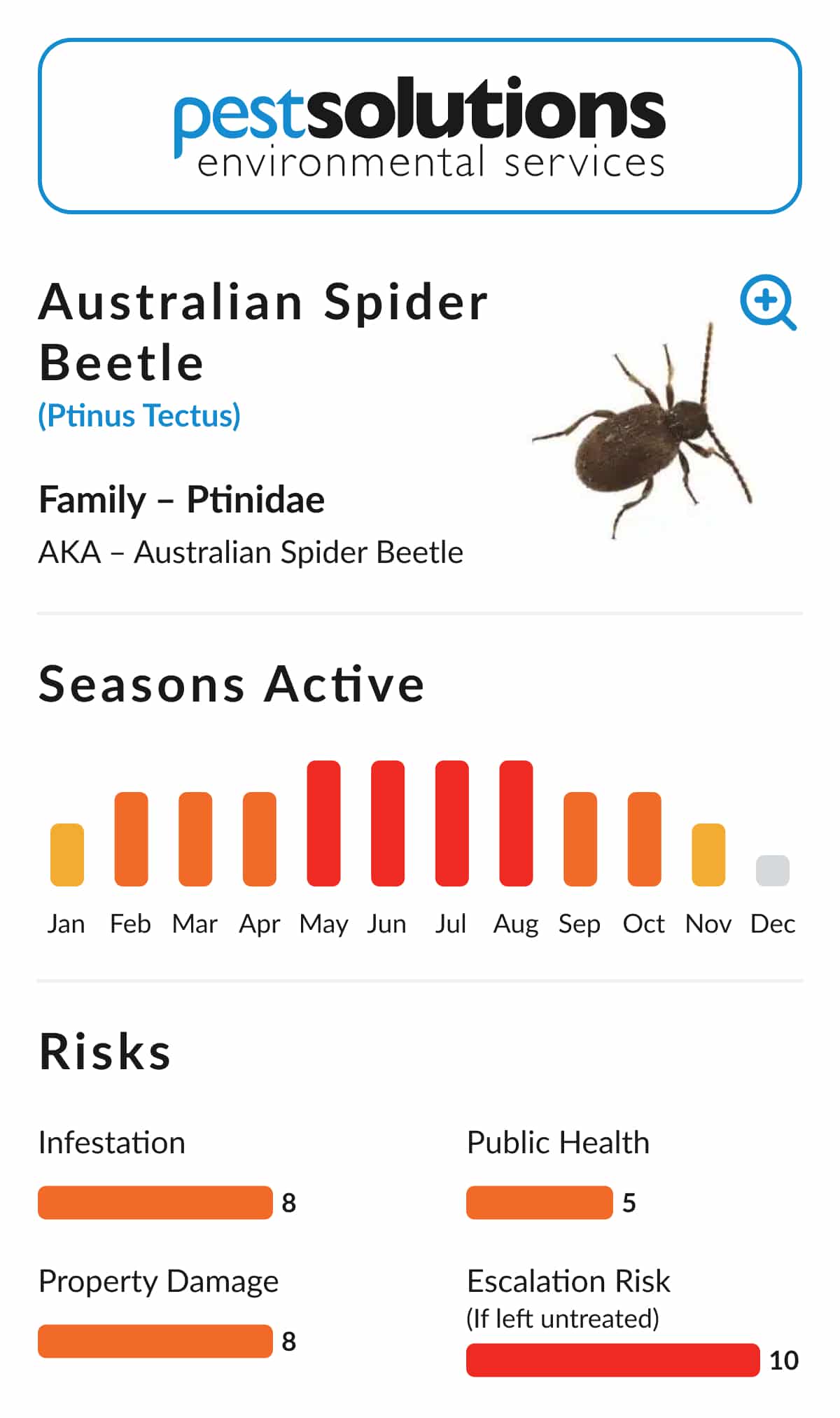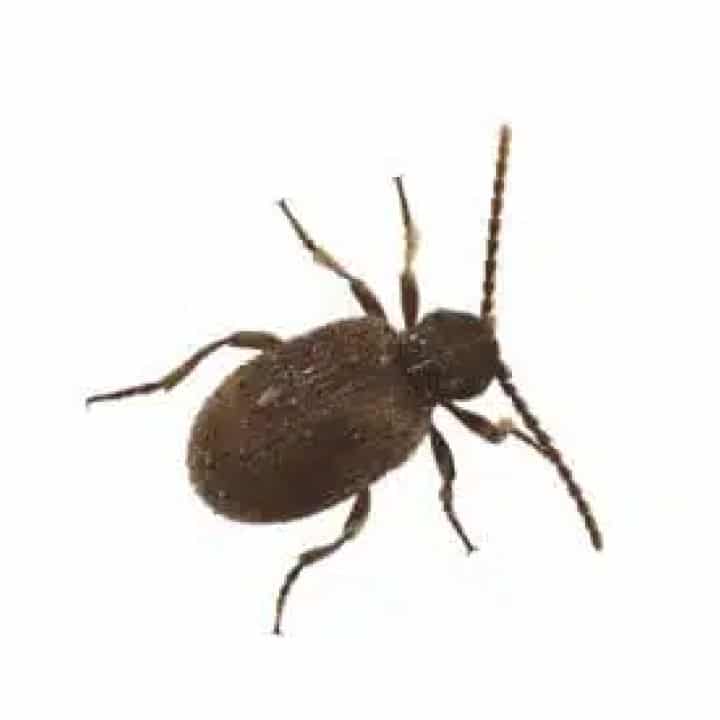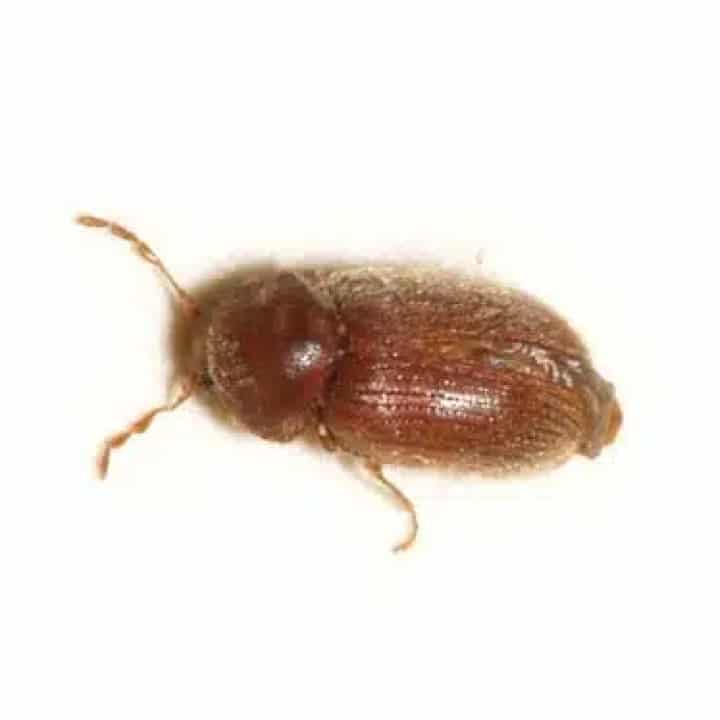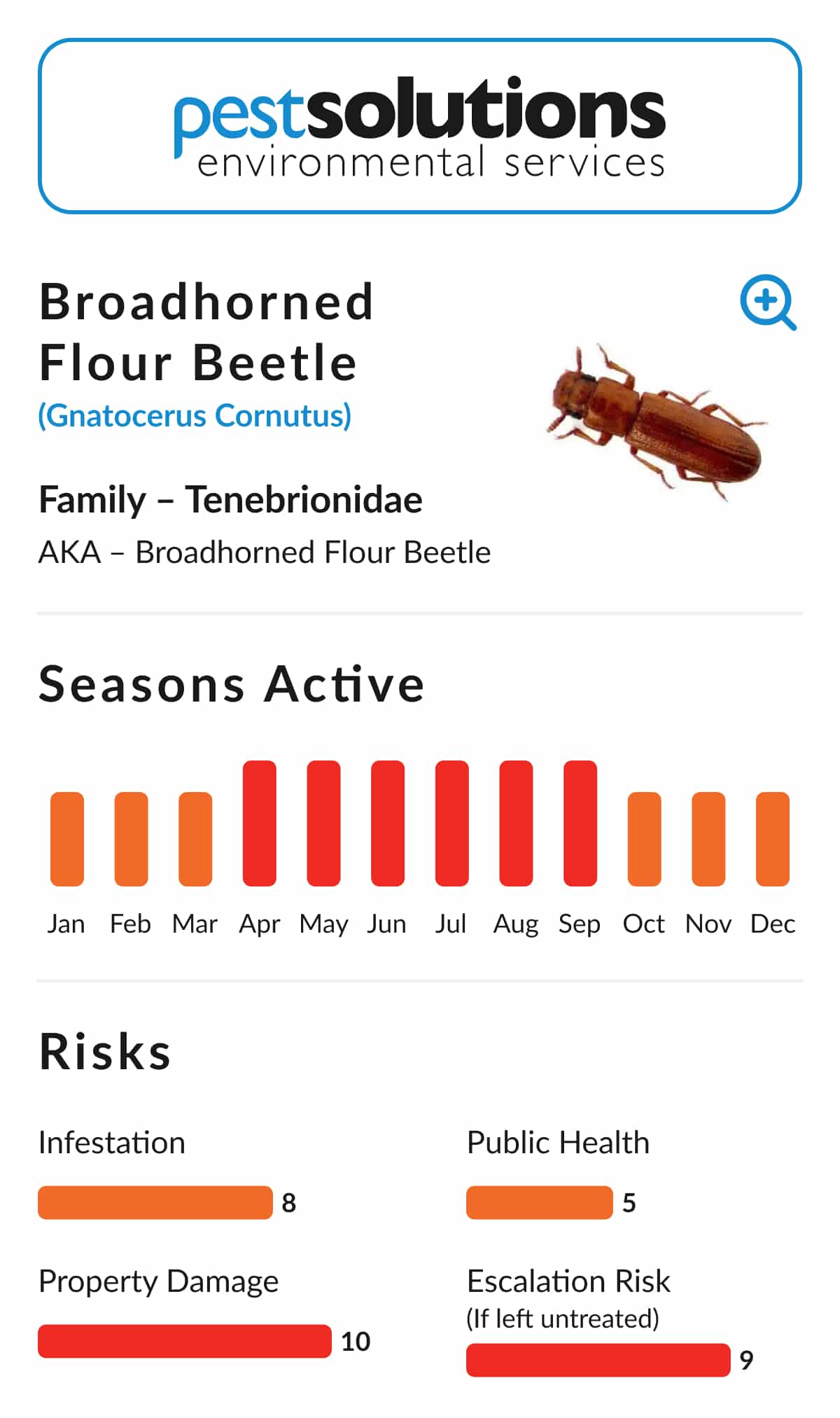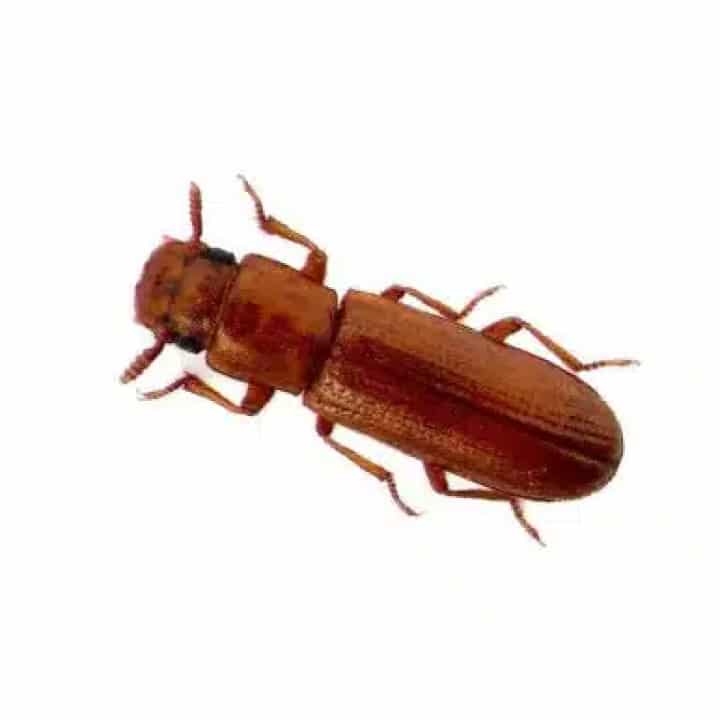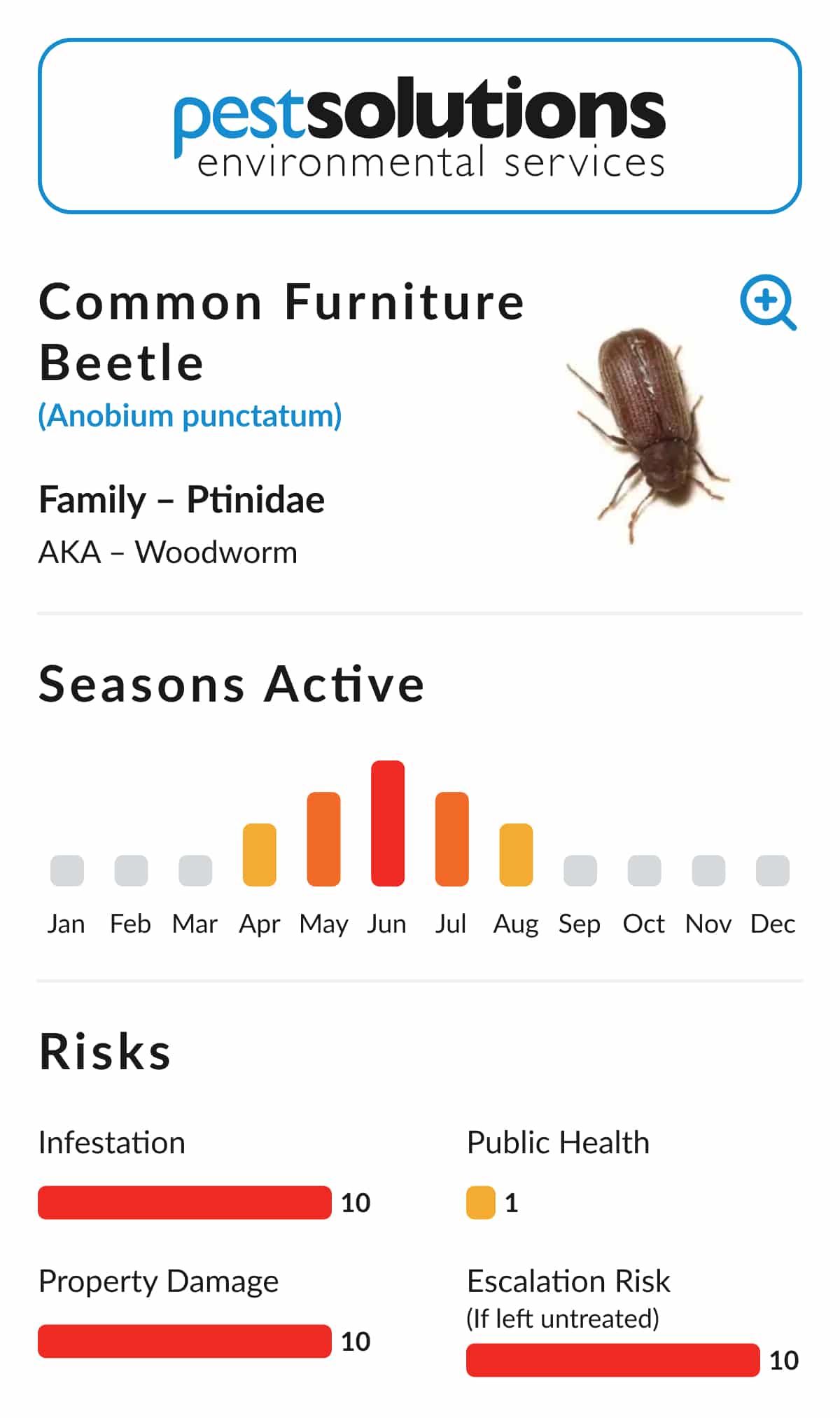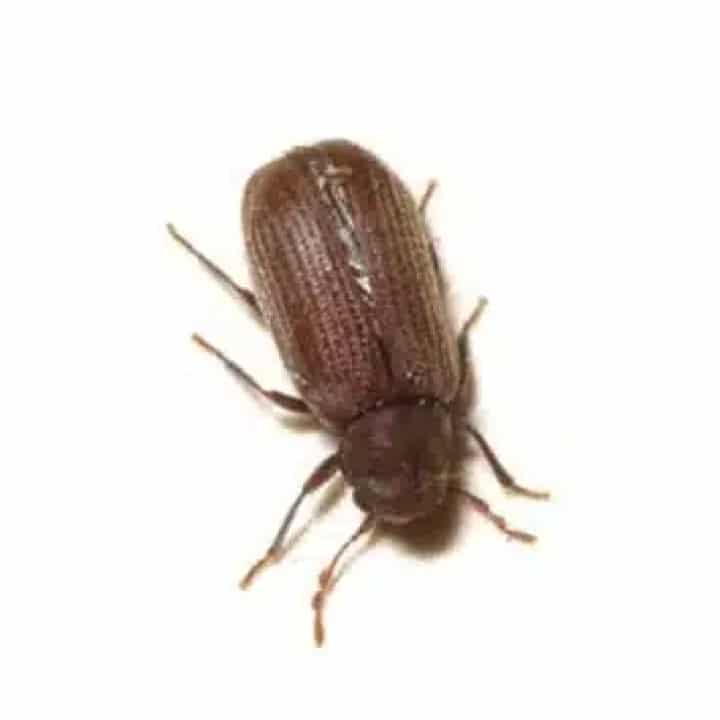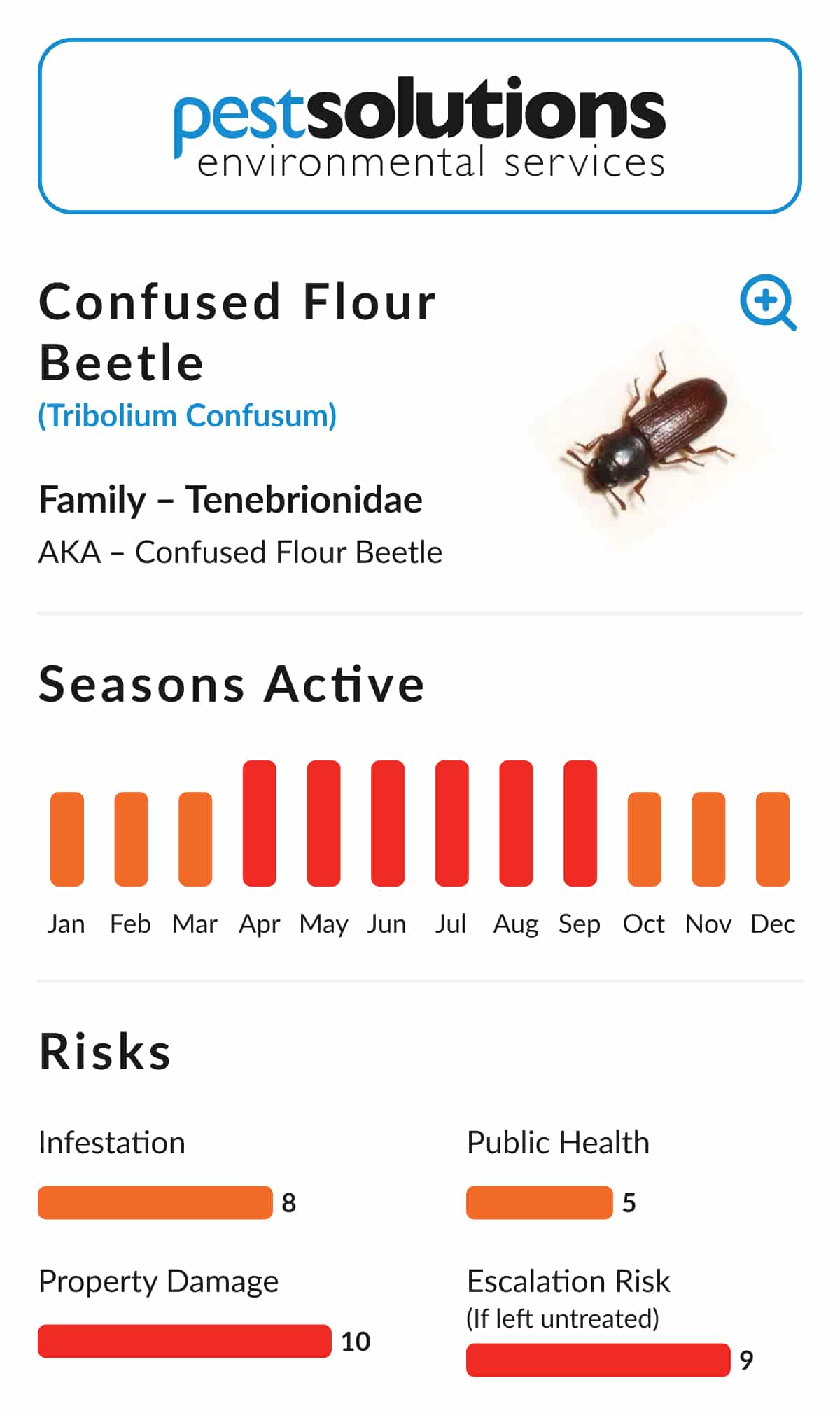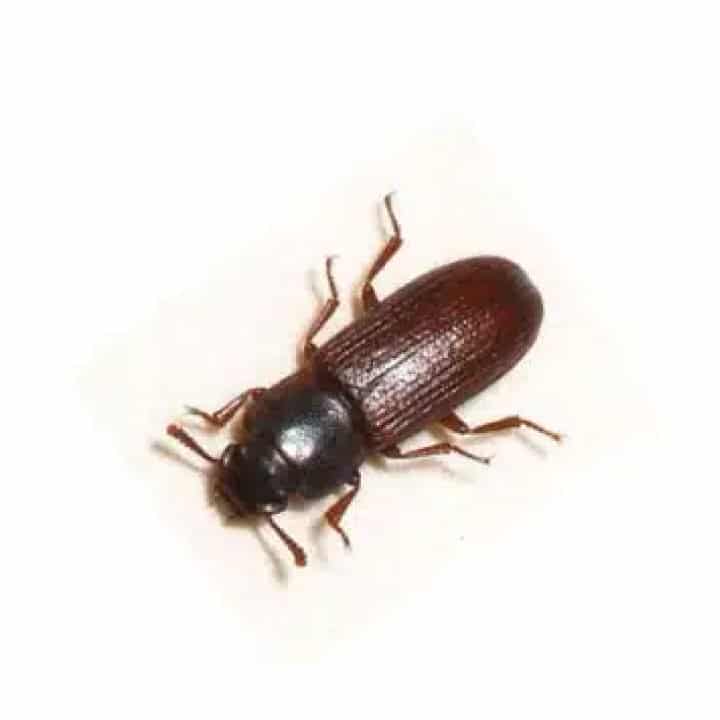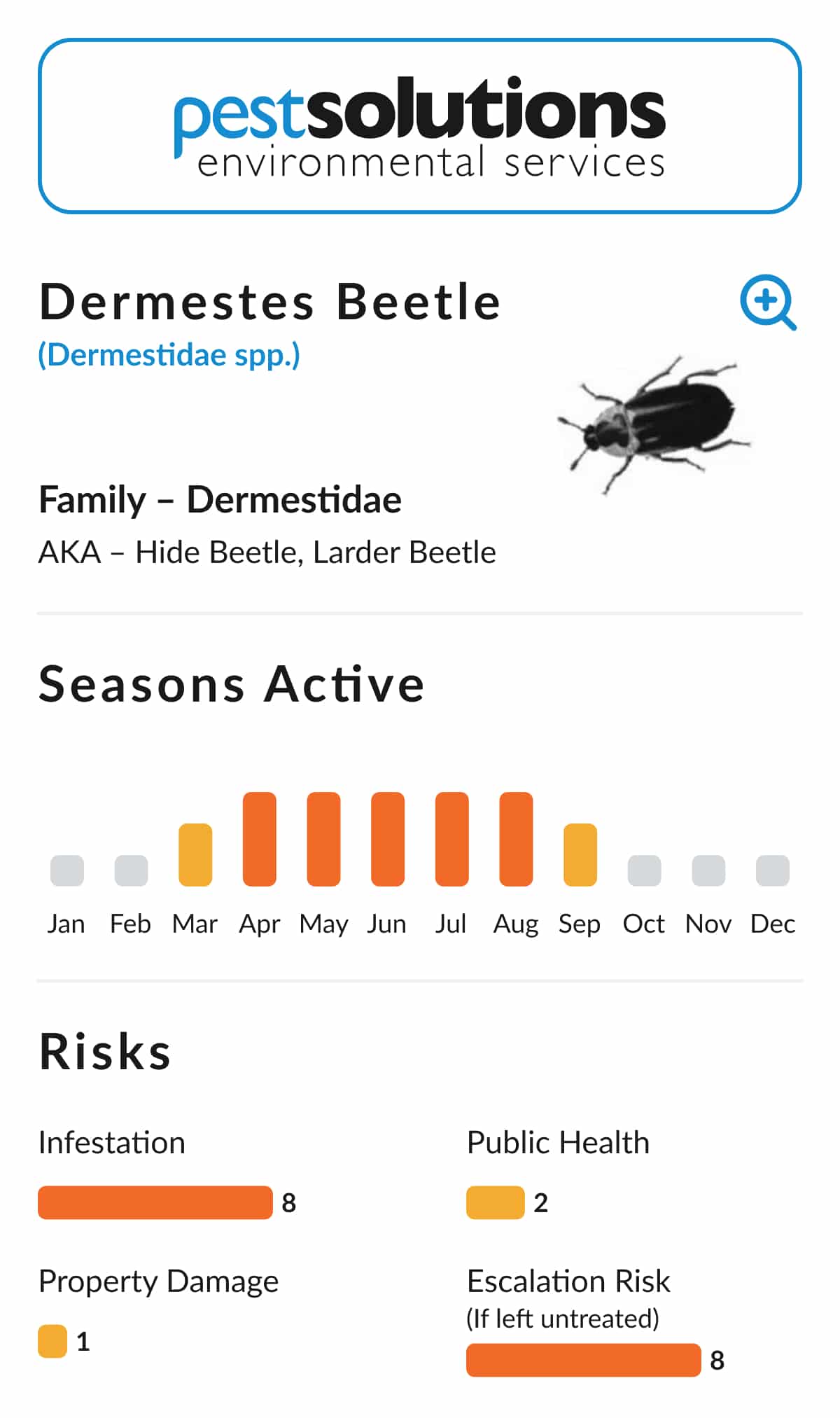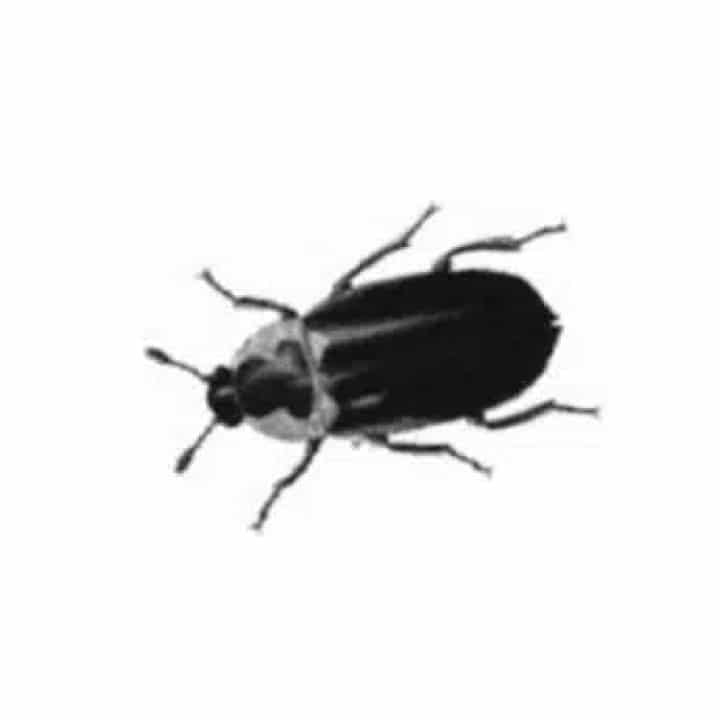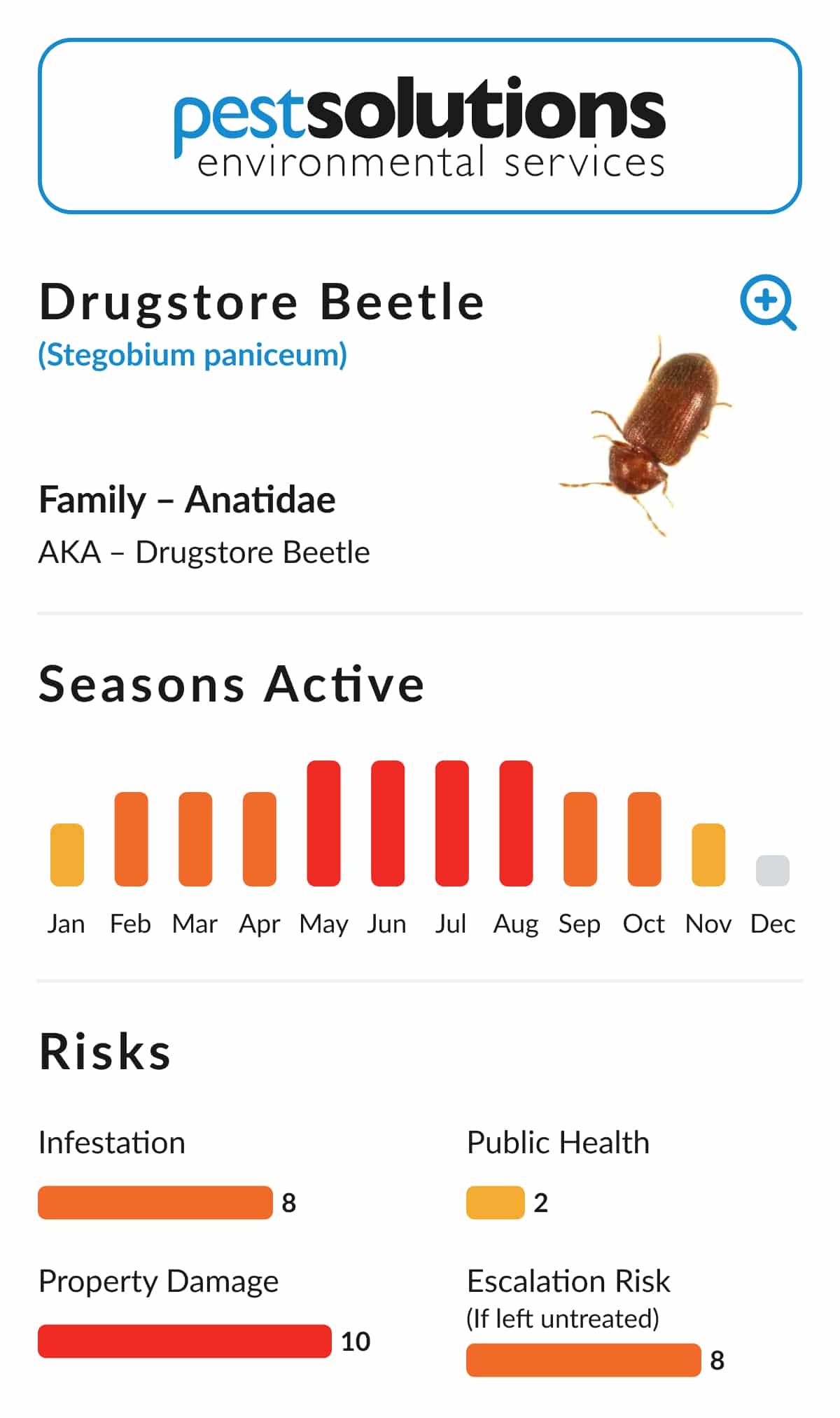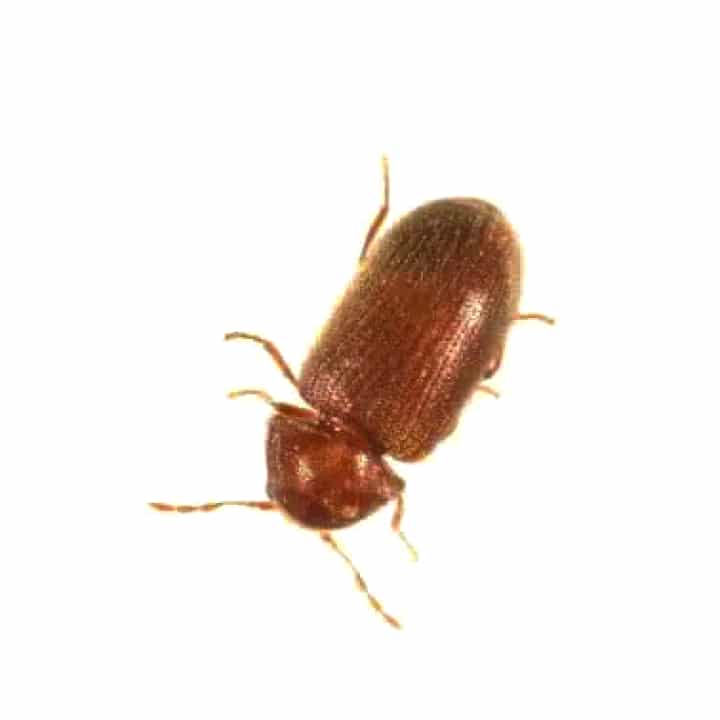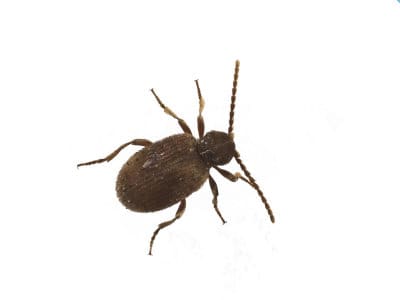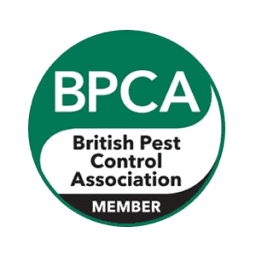Identification – Australian Spider Beetle (Ptinus tectus)
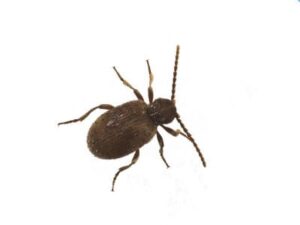
The life cycle includes several stages:
Eggs: Each female can lay up to 200 eggs, typically 6–50 per week, deposited near food sources. Eggs hatch within a week.
Larvae: Initially active and able to penetrate packaging materials, larvae become grub-like and immobile as they grow. They are responsible for most of the damage, especially during pupation.
Pupae: Pupation occurs within protective cocoons, which may appear in clusters or lines near infested food.
Adults: The adult beetle emerges after 20–25 days in the pupal stage. Adults can live for up to 12 months and remain active at temperatures as low as 2°C, with 25°C being the ideal for development.
Typically, two generations per year can develop in unheated premises, allowing populations to persist and spread without strict climate control.
Habitat and Distribution – Australian Spider Beetle (Ptinus tectus)
The Australian Spider Beetle is almost exclusively found indoors. It is particularly common in older buildings and food storage environments where hygiene standards may be compromised or where structural voids provide access to harbourage sites.
This species often nests in dry birds’ nests found in lofts, eaves, and roof voids. From there, they can enter storage or living spaces, infesting stored goods or damaging materials like wool, feathers, and fabrics. Their presence is not limited to industrial settings; they are occasionally found in domestic homes, especially where bird activity around the roofline is common.
Why They’re a Problem – Australian Spider Beetle (Ptinus tectus)
Australian Spider Beetles are capable of causing both physical damage and contamination. Their larvae bore into dried food products, hollowing out items such as dog biscuits, dried pulses, and spices. During their pupal stage, they may chew through packaging, sacks, and even insulation, leading to product loss, contamination, and increased clean-up costs.
Wandering adults can also contaminate food and non-food materials, adding to the nuisance and making infestations harder to track. In domestic settings, their presence can lead to the destruction of stored clothing, upholstered items, and organic fibres, especially when linked to nearby bird nesting sites.
Infestations often go unnoticed until significant damage has occurred, making proactive monitoring and control essential.
